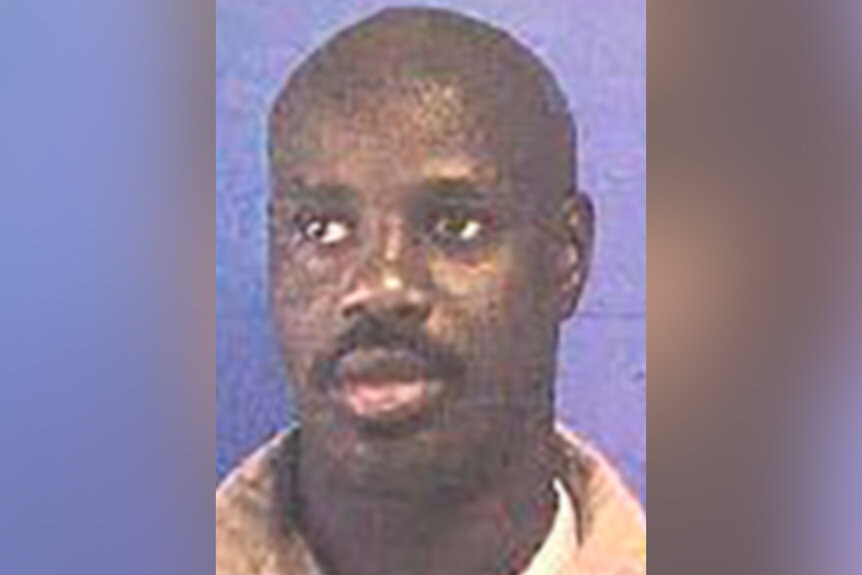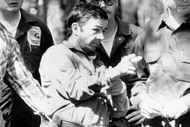Create a free profile to get unlimited access to exclusive videos, breaking news, sweepstakes, and more!
‘She Was Clearly Stomped On’: Serial Killer Crushing Women's Skulls Terrorized Connecticut
In Hartford, Connecticut, a search commenced for a serial killer, Matthew Steven Johnson, who seemed to enjoy “the physical act of annihilating another human being.”
On June 20, 1999, police in Hartford, Connecticut responded to a call reporting a woman had been found dead on a back porch on Garden Street.
“She had serious head trauma, including a crushed skull and injuries around her neck and head,” Lt. Mark Pawlina, of the Hartford Police Department, told “Mark of a Serial Killer,” airing Saturdays at 8/7c on Oxygen.
Those chilling telltale marks would become a familiar sight for police in the city in the year or so that followed.
The medical examiner determined the homicide victim, identified through fingerprints as 28-year-old Ladawn Roberts, had been dead for less than 24 hours.
Her mother told authorities that her daughter had fallen on hard times. Roberts was also pregnant when she was killed. With a lack of leads, the case turned cold.
Ten months later, the body of 33-year-old Aida Quinones was found partially unclothed with serious head trauma, suggesting “she’d been the victim of somebody’s rage,” investigators told producers. The medical examiner determined her skull, like Roberts’, had been crushed.
Detectives found a possible clue close to the body. Newport cigarette butts were collected and processed for DNA evidence. The autopsy also indicated there’d been a sexual assault. DNA evidence was sent to the crime lab for analysis.
Investigators learned from Quinones’ brother that she lived out on the street, they told “Mark Of A Serial Killer.”
To help elicit leads, the State’s Attorney office offered a $30,000 reward. The strategy failed to produce viable information.
In June 2000, the body of Rosalind Casey, 32, was found under a bridge in Asylum Hill. Some items of her clothing had been pulled off.
Like the other two victims, Casey’s skull had been crushed. It appeared that the killer had stomped on her head. A serial killer seemed like a strong possibility, and the community was understandably scared.
“This is a guy who is so filled with rage,” said Dr. Joni Johnston, forensic psychologist. “This is somebody, I think, based on what we’re seeing, who has felt that rage for years ... the mark of crushing a skull tells me this is somebody who wants to be so close to his victim that he doesn’t put a weapon in between them. This is somebody who just enjoys the physical act of annihilating another human being.”
In August 2000, the body of 32-year-old Rosali Jimenez was found in an abandoned building on Cedar Street. One pant leg had been pulled down and a shoe had been removed. Jimenez’s head was crushed almost beyond recognition.
"She very clearly was stomped on. It was probably the worst case out of all the cases we had seen previously,” Pawlina told producers.
Blood was found underneath her fingernails and analyzed at the crime lab. Newport cigarette butts also were found near the body. DNA evidence found on the victims was cross-checked for commonalities — and it turned out Quinones and Jimenez had matching DNA on their bodies.
Police compiled a list of known offenders with a history of sexual assaults and violence against women. They found 11 homicides that had some similarities to the current cases, but after a deep dive none could be connected to the current investigations.
In July 2001, the body of 37-year-old Alesia Ford was found. Like the other victims, her head was crushed, some of her clothing had been removed, and Newport cigarette butts were scattered near her body. In a new twist, a bloody boot print was found on her torso.
Forensic analysis determined the footwear in question to be a size 11 Timberland boot, said Dr. Henry Lee, forensic scientist. DNA found on Ford’s body matched up to evidence found on Quinones and Ford.
“A lot of these victims have fallen on hard times,” said Shannon Miller, a reporter for NBC Connecticut, adding that some struggled with drugs. “They're used to kind of walking the streets, which makes them even more vulnerable.”
In January 2002 the case took a major turn when the DNA database turned up a match for evidence found on the cigarette butts and victims’ bodies.
The individual’s name: Matthew Steven Johnson, who had an extensive criminal record involving violence against women. He also had a fraternal twin brother, Mark, who lived in Florida. Police were able to rule out any link between Mark Johnson and the murders.
Investigators learned that Matthew Steven Johnson’s scrapes with law enforcement began in his teens. In 1980, he was sentenced to four years behind bars for beating an Asylum Hill woman who was pregnant until she miscarried. Upon his release, his crimes continued and he was sent back to prison.
Police eventually tracked Matthew Steven Johnson to a homeless shelter, where he was arrested without incident. At the shelter, authorities collected the suspect’s belongings, including a pair of size 11 Timberland boots and Newport cigarettes.
At the station house, police hoped for a confession. But the suspect steadfastly denied any guilt.
There was not enough evidence to link Matthew Steven Johnson with every case, including Ladawn Roberts, whose murder remains unsolved. He was charged with the murders of Aida Quinones, Rosali Jimenez, and Alesia Ford.
The case proceeded to a trial, and in 2004, he was found guilty of the three murders. Matthew Steven Johnson, 40, was sentenced to three consecutive life sentences.
For more on this case and others like it, watch “Mark of a Serial Killer,” airing Saturdays at 8/7c on Oxygen or stream episodes here.






























